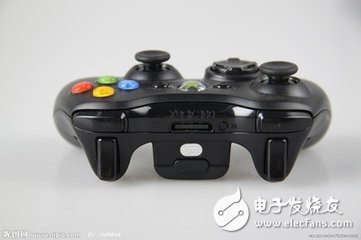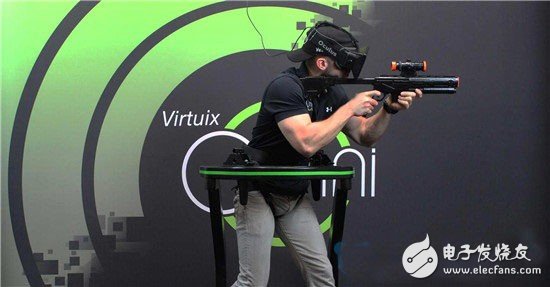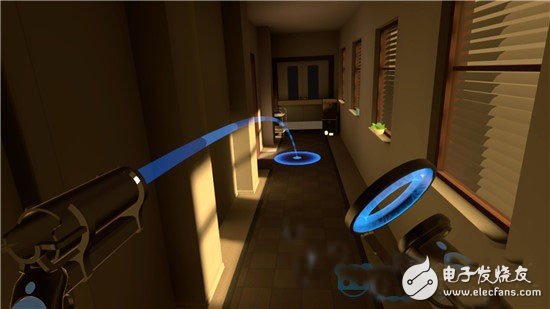At the end of the first year of VR, major hardware manufacturers have introduced their own products into the market, and can provide quite real VR games and experiences. We have solved the immersion and solved the key problems of location tracking, socialization and so on. But it does not conclude that the best way to present virtual reality is. In other words, we don't even know how to move better in the virtual reality world?
First, let's first list the main types of VR operating devices:
Gamepad

Gamepad
The game controller can be said to be the most mature and lowest cost solution available in the current technology. It is also the operating device that can enter the VR market as quickly as possible, but its rough operation and unrealistic experience are completely beyond the VR era. The basic requirements of VR games require a more intuitive and more realistic approach to operation.
2.VR controller

VR controller
With the official launch of the Oculus Touch this month, Oculus, PSVR and HTC Vive's own VR controllers are in place, although the internal implementation mechanisms of the three controllers are more or less different, but they are finally achieved. The purpose is exactly the same, that is, the controller acquires the position and direction in the VR environment to complete the interaction, but the current technology of such devices is still relatively primitive, and can not solve the mobile problem in the virtual reality experience.
3. Treadmill

Virtuix Omni
At present, the most famous of these peripheral products are the Virtuix Omni and the domestic KAT WALK from Virtuix. This device can solve the problem of insufficient space and provide the closest virtual reality mobile solution. They are still far from mature, and the problems of price, volume, etc. have to be solved. In the past few days, Omni's cancellation of international orders due to cost issues is the most realistic problem.
Of course, there are many other alternative controllers, such as the disc-type 3DRudder, etc., but in fact the final solution is no different from the VR controller.
Next, let's talk about the more feasible mobile methods in the current VR experience:
1. Through the room tracking system (Room-Scale)
The room tracking system was first used by HTC Vive. It uses the Lighthouse positioning system to determine the position of moving objects based on laser and light sensor, allowing users to move freely within a certain space. The maximum tracking range can support 15 feet x 15 feet (about 4.57 m X 4.57 m), at least 1.5 m x 2 m space is required. Then, after the launch of the Oculus Touch, the Riff+Touch+ third sensor can also be used to achieve greater room tracking space.
Hover Junkers, a game on HTC Vive, uses a first-person perspective and takes advantage of Vive's room tracking system. The game developer Stress Level Zero has said that they want players to get as close to reality as possible in the game, but during the actual experience of the game you will find that it is not for the player to walk freely on the entire map. It is shuttled through the armored car in the game. With the support of the room tracking system, the player can turn around and have limited movement. Of course, it is only a small area of ​​movement.
Obviously, it is difficult for us to have a safe area to satisfy this technology in our daily life, and it will be difficult to carry our real experience needs in the future.
2. Through the handle / controller
At present, the handle is the most popular VR input device. According to Sony, PSVR games often need to be seated, controlled by the handle or PS Move, and provide very limited motion tracking. Recently, players who started PSVR believe that they have already taught the "Resident Evil 7" VR version. This game has won the praise of players through extremely realistic immersion and horror, but a very prominent problem is in addition to the head in the game. In addition to the tracking and the handle to change the direction of movement, you also need to use the joystick to move the angle of view greatly. This is a very destructive gameplay and realism.
Some games use the momentary movement to solve the mobile problem. This is obviously contrary to the concept of virtual reality technology, or the experience is not really virtual reality, it is more like changing the display.

3. Through the VR treadmill
Regardless of Omni, KAT WALK or other similar products, these integrated protection measures, massive motion sensors and treadmill belt products seem to be the best way to move VR experience. On the one hand, it can provide a true sense of movement, while also No need for actual huge space. But be aware that the high price, relatively large size and poor adaptability prevent it from becoming a consumer-grade product. Even in various VR experience stores in China, it is difficult to see such products. Obviously, The VR treadmill needs more iterative evolution to enter our home.
Each of the above three solutions has its own advantages and disadvantages. The room tracking technology can be used to achieve the mobile effect, but the range is extremely limited, and the risk factor is relatively high. The handle/controller is the most popular and popular, but the gameplay is poor; VR Although the treadmill can provide the most realistic mobile solution, its high price and volume can only stay in business. So, in the future VR era, how can we solve the mobile method more effectively?
Imagine the future
Natural interaction
Natural interaction is the goal of eliminating the boundaries between the environment in which people live and the computer system, enabling simultaneous movement and natural operation on a single device. It can be said that the handle/controller is integrated with the treadmill or other VR peripherals. , has achieved the best close to the real interactive experience, just like the Oculus Rift+Virtuix Omni classic VR game combination demo video that was first transmitted on the Internet, but this kind of technology is still in the lab, and it is more difficult than it seems. To be much higher, cost control is also a very difficult problem to overcome. However, reducing the cost of VR is a common goal of all hardware manufacturers. I believe this is the most practical solution in a relatively short period of time in the future.
2. Neural control
"Intracerebral intubation" in the film "Ghost in the Shell"
In the movie "The Matrix" and "Ghost in the Shell", the human body is plugged with various plugs to receive the sensory stimulation signals of the computer system, and humans rely on these signals to live in a completely virtual computer vision. This is also called post-brain intubation. In the advanced step, it is nerve control. When this level is reached, all the mechanical equipment can be no longer needed. Any place we need to use our brains can experience any Things you want to experience. Of course, this is still in some very preliminary experimental stages, and it is far from the actual application and popularity.
At present, people in the field of virtual reality have not reached a consensus on how to move, but believe that as people become more accustomed to the virtual world in the future, how to move in the VR environment will become a more core issue.
Fixed Support,Steel Support,Solar Panel Support,Ground Solar Mounting Support
Fuzhou Mei Li Cheng Imp&Exp Co., Ltd , https://www.mlc-solar.com